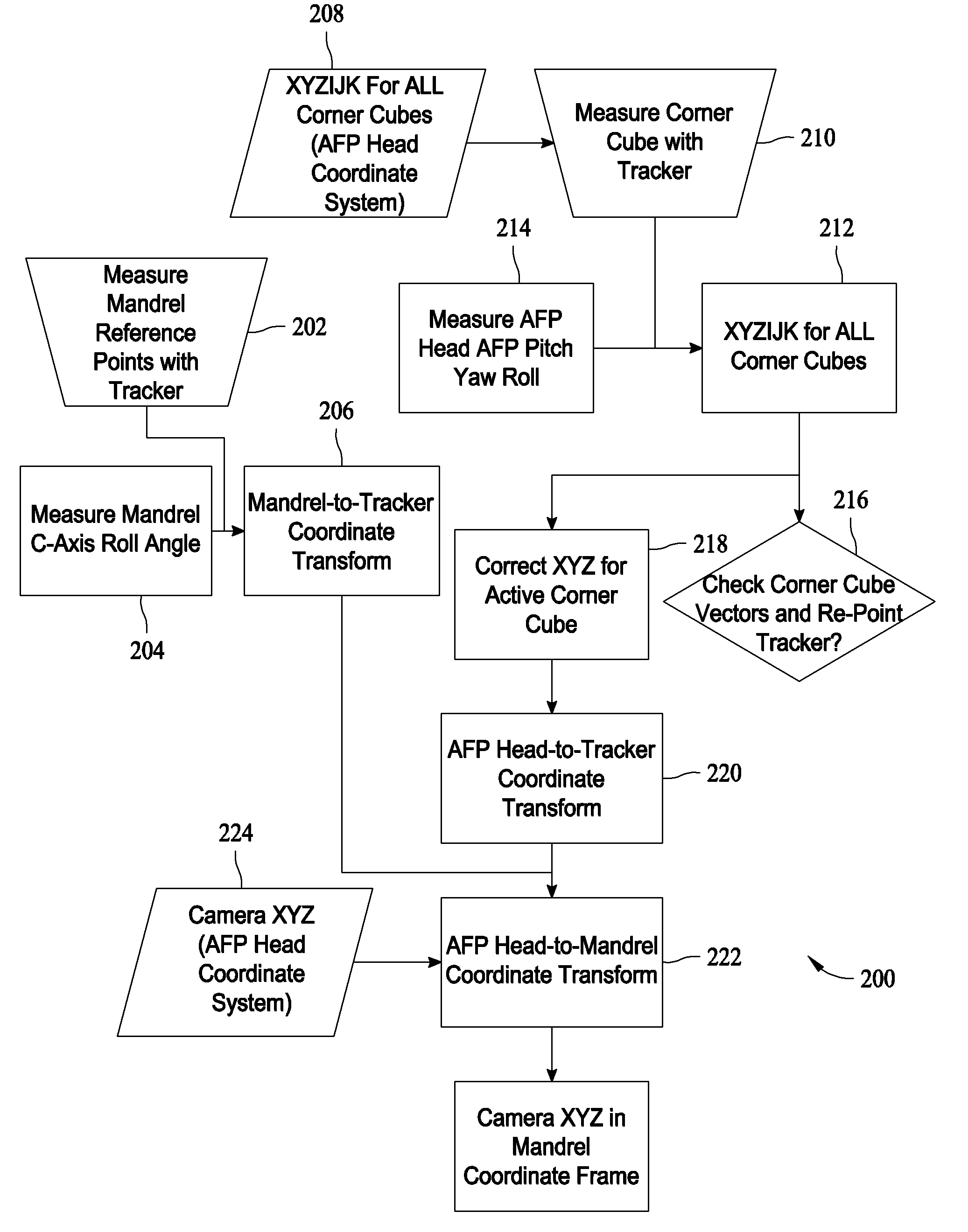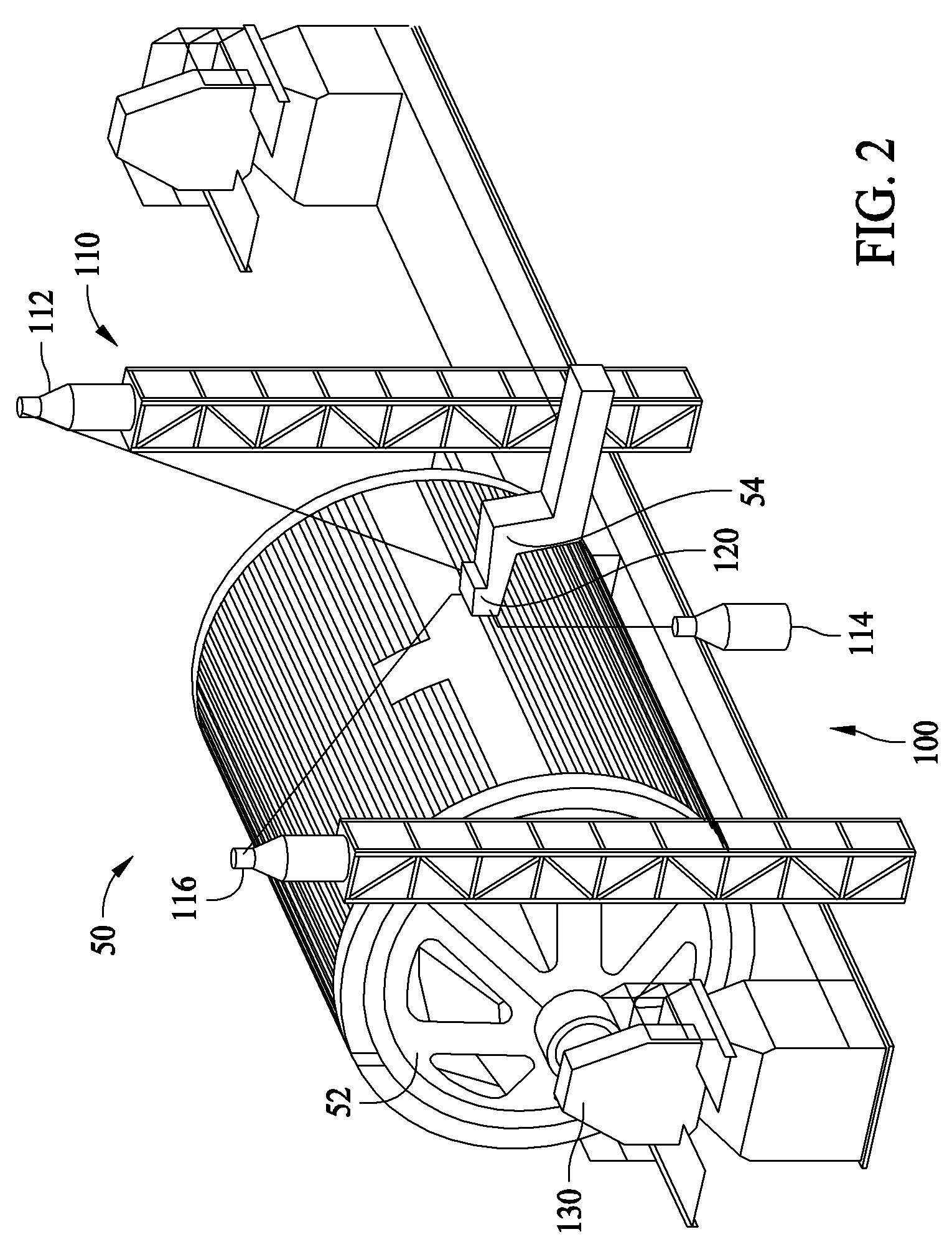Methods and systems for automated ply boundary and orientation inspection
a technology of ply boundary and orientation inspection, applied in the field of layered composite material fabrication, can solve the problems of inability to project at the required accuracy over an enlarged surface, inhibit the rate capability of a production facility, and not be acceptable in a manufacturing environmen
- Summary
- Abstract
- Description
- Claims
- Application Information
AI Technical Summary
Benefits of technology
Problems solved by technology
Method used
Image
Examples
Embodiment Construction
[0012]To address the above described issues with ply boundary and orientation inspection, embodiments of the described methods and systems are utilized to increase rate capability, reduce recurring flow time, reduce labor hours, and enable ply inspection on future versions and variations of the composite structure, which in a particular embodiment, is a composite component for a fuselage barrel.
[0013]The described embodiments utilize a vision system, combined with laser tracker measurement devices, or other position measuring devices, and encoders, to map where carbon fiber material is being placed on a cure mandrel (or tool) by automated fiber placement machines. More specifically, the system records where the material is being placed onto the tool and compares it against the nominal material placement engineering data set in order to indicate areas of placement that are outside of manufacturing tolerances.
[0014]As described above, the current optical laser template (OLT) process i...
PUM
| Property | Measurement | Unit |
|---|---|---|
| angle | aaaaa | aaaaa |
| receiving distances | aaaaa | aaaaa |
| distances | aaaaa | aaaaa |
Abstract
Description
Claims
Application Information
 Login to View More
Login to View More - R&D
- Intellectual Property
- Life Sciences
- Materials
- Tech Scout
- Unparalleled Data Quality
- Higher Quality Content
- 60% Fewer Hallucinations
Browse by: Latest US Patents, China's latest patents, Technical Efficacy Thesaurus, Application Domain, Technology Topic, Popular Technical Reports.
© 2025 PatSnap. All rights reserved.Legal|Privacy policy|Modern Slavery Act Transparency Statement|Sitemap|About US| Contact US: help@patsnap.com



